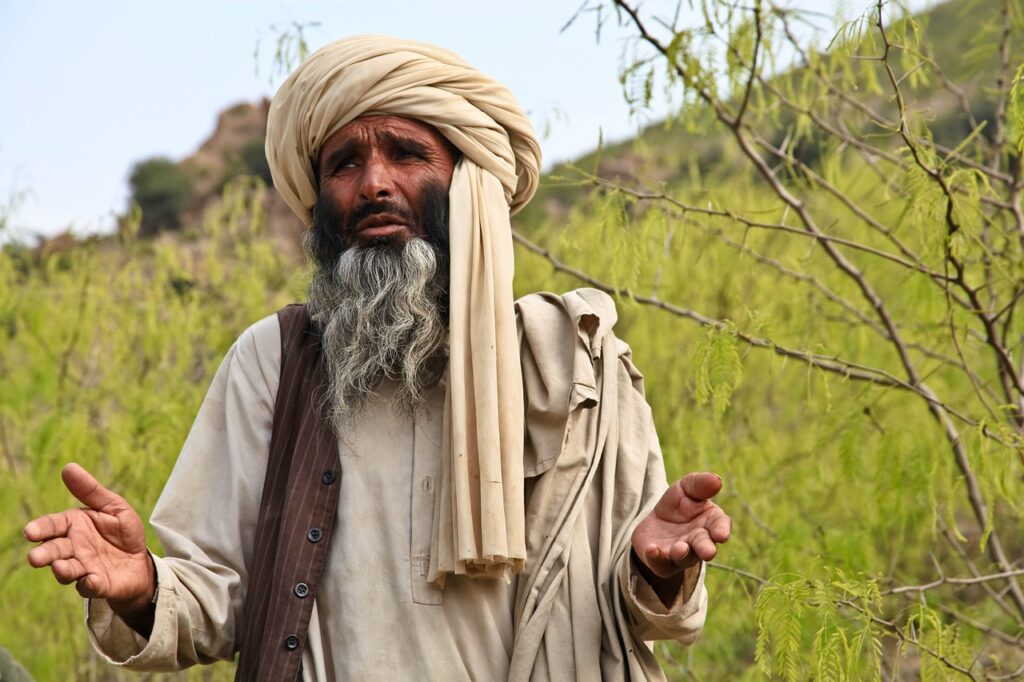The rise and fall of the Afghan Taliban is a story that has been difficult and complex for researchers. To understand the Afghan Taliban, it is important to look at their history. With the rise of extremist groups such as the Islamic State and Al-Qaeda, counter-terrorism has become a priority for many governments around the world. In an effort to combat these groups, countries are working to understand their ideology, structure, and tactics. Keeping this in mind, the article provides an overview of The History of the Taliban, its Theory, and its Practical Implementation as a State Institution in Afghanistan.
The Rise of the Afghan Taliban
The Rise and Fall of the Afghan Taliban is a long story but I will try to assemble it in one short article. First, we take into account the rise of the Afghan Taliban. The term “Taliban” entered the global mainstream in the early half of the 1990s. The Taliban had emerged from madrasas (Islamic schools) across Afghanistan and Pakistan. They were a militia group that emerged as a social order force in Afghanistan. During the 1990s, they emerged as an ultraconservative group with political, religious, and social dominance in Afghanistan. They imposed Sharia-based legislation as understood by their conservative beliefs in areas gradually taken over by them. They were primarily focused on removing the Soviet Union and its allies from Afghanistan, but also had hopes of instigating a worldwide Islamic revolution, through the use of Jihad.
The Taliban’s first politically significant success came in 1994, when they captured Kandahar. Kandahar, a historic city, is strategically placed in South-Central Afghanistan, on the path that connects Central Asia, Pakistan, and India. Kandahar was ruled by the Persians in ancient times, and Alexander the Great took possession of it before Chandragupta Maurya and his grandson Ashoka the Great.
Afghanistan in 1994 was a chaotic and politically disorganized place. The Taliban arrived in Kandahar with widespread support, promising to clean up the crime-ridden Afghan city. The reinforcement of Islamic thought was so powerful that it quickly spread across vast areas. In less than two years, the Taliban had captured Kabul from President Burhanuddin Rabbani’s soldiers. By 1996, the Taliban had seized control of Afghanistan. Their quest for absolute control, however, continued.
At its peak, the Taliban ruled nine-tenths of Afghanistan before Osama bin Laden’s al-Qaeda carried out the 9/11 attacks in the United States, killing around 3,000 people. The terror act elicited an outraged response from the United States and its NATO allies, which was aimed at al-Qaeda but resulted in the Taliban being driven out of Afghanistan for the next 20 years.
The Fall of the Afghan Taliban
The Taliban has rejected the US demand that Osama bin Laden be handed over. Between 1999 and 2001, the United Nations strengthened sanctions against the Taliban for harboring and training terrorists. This phenomenon played a significant role in the Rise and Fall of the Afghan Taliban.
However, the 9/11 attacks drew US-led NATO forces to Afghanistan’s Bagram airbase after the Taliban once again refused to extradite Osama bin Laden. In October, the United States landed in Afghanistan. By mid-December 2001, the Taliban were evacuating their strongholds, notably Kandahar, and an interim government organized in Germany by anti-Taliban parties gained power in Afghanistan.
A Loya Jirga had been assembled and a new constitution had been approved by early 2004. Hamid Karzai has previously been appointed as interim president in 2001. He earned a majority in the 2004 presidential election, the first in which women were granted the right to vote. Hamid Karzai’s father and grandparents also worked for the Zahir Shah government, which saw Afghanistan undergo significant change. He had emerged as a candidate for Afghan president after reaching out to US authorities in opposition to the Taliban. His election appeared to be the end of the Taliban in Afghanistan. However, the US decided to remain in Afghanistan. Osama bin Laden was found and killed in a night mission by the US forces ten years after the US army entered Afghanistan. The only problem was that Osama was not in Afghanistan. In 2011, he was in Pakistan’s garrison town of Abbottabad. [Source]
The Afghan Taliban Rise Again
By the end of 2018, the US was committed to withdrawing from Afghanistan, which put President Ashraf Ghani’s administration under pressure. A significant acknowledgment by the Afghan government was made in January 2019. It claimed that over 45,000 security personnel had been lost over the course of the previous five years, which included Ashraf Ghani’s administration and the Taliban’s rebirth.
On the other hand, the government of Donald Trump was committed to returning its troops from Afghanistan. In February 2020, a compromise was reached between the US and the Taliban after numerous rounds of talks in Qatar. Time-bound troop withdrawals from Afghanistan were required from the US and NATO.
Afghanistan had been destroyed by the US-Taliban conflict. Furthermore, the Taliban did not have a problem finding new members or funds for its operations in this country that had been devastated by war. As a result, while the US was preparing to leave Afghanistan, the Taliban were preparing to demolish the official government.
The Taliban never surrendered their struggle against US-led forces. The Taliban resorted to guerrilla warfare after being defeated by American forces. From 2001 forward, it would systematically target installations, public venues or officials, military bases, and government convoys. It has clearly survived possibly the largest counter-insurgency operations in 20 years by the most formidable military forces of the United States and NATO.
Despite the casualties, the Taliban reorganized and re-recruited soldiers in sufficient numbers to see through the American stay and see NATO forces weary of Afghanistan’s insurgency crisis. When the Trump administration stated unequivocally that it would withdraw its forces, the Taliban launched its concerted re-control military campaign.
Approximately 20% of Afghanistan’s more than 400 districts were under the hands of the Taliban at the time the US and the Taliban agreed to a peace agreement. In comparison, just roughly 33% of the districts were under the control of the government.
According to the agreement, all American soldiers would leave Afghanistan completely, 5,000 Taliban detainees would be freed, and anti-Taliban sanctions would be lifted.
The agreement also made it quite evident that the Taliban held the key to Afghanistan’s future, at least in terms of the United States. Numerous regional nations followed Washington’s lead and held their own meetings with the Taliban in Doha. Additionally, the Biden administration decided to keep the pact in 2021. The Afghan Army was unable to carry out the tasks that its U.S. trainers had planned for it to complete without U.S. logistical support and air power.
The emirate’s return in August 2021 was accomplished by both diplomats and foot soldiers. Their restoration to power was made possible by the American pullout. In its last days, the US was forced to rely on Taliban leaders to guarantee safe exit for American citizens.
Theory of the Afghan Taliban
The Afghan Talibans, as a movement and an ideology, believe that their movement is an Islamic one that seeks to re-implement the societal aspects of Islam as they were when the Prophet Hazrat Muhammad (PBUH) lived. This is exemplified in the Taliban’s strict interpretation of Sharia law. The Taliban also believes that their movement is a socio-political one, and so seeks to establish a “pure” society, in which the laws of the land are based on the laws laid down in the Quran and the Sayings of the Prophet Hazrat Muhammad (PBUH). In their socio-political society, the Taliban is keen to implement strict gender roles and has actively tried to repress the rights of women and establish a strong military state.
Practical Implementation of ideological aims of the Afghan Taliban
In addition to their ideological and socio-political ambitions, the Afghan Taliban have also sought to implement their ideological aims through practical methods. First, the group has sought to establish a strong military state in Afghanistan, with a strict separation between the different branches of government. In this regard, the Taliban’s application of Sharia law and strict gender-role enforcement has led to a number of human rights violations and violations of the rights of women. Secondly, the Talibans have also sought to establish strong ideological control in Afghanistan. In doing so, the group has attempted to implement a strict ideology over the people of Afghanistan. This has led to a number of public executions and executions for offenses.
Conclusion
The Taliban played an instrumental role in overthrowing the Soviet Union from Afghanistan. However, their ideological ambitions were quickly met with military defeat, as the movement was unable to establish a state. However, after decades, they managed to capture the country again. Their government is under heavy criticism due to their strict actions. The article has attempted to provide an overview of the Rise and Fall of the Afghan Taliban, the history of the Taliban, their theory, and its practical implementation as a state institution in Afghanistan. Please leave a comment. Thanks


